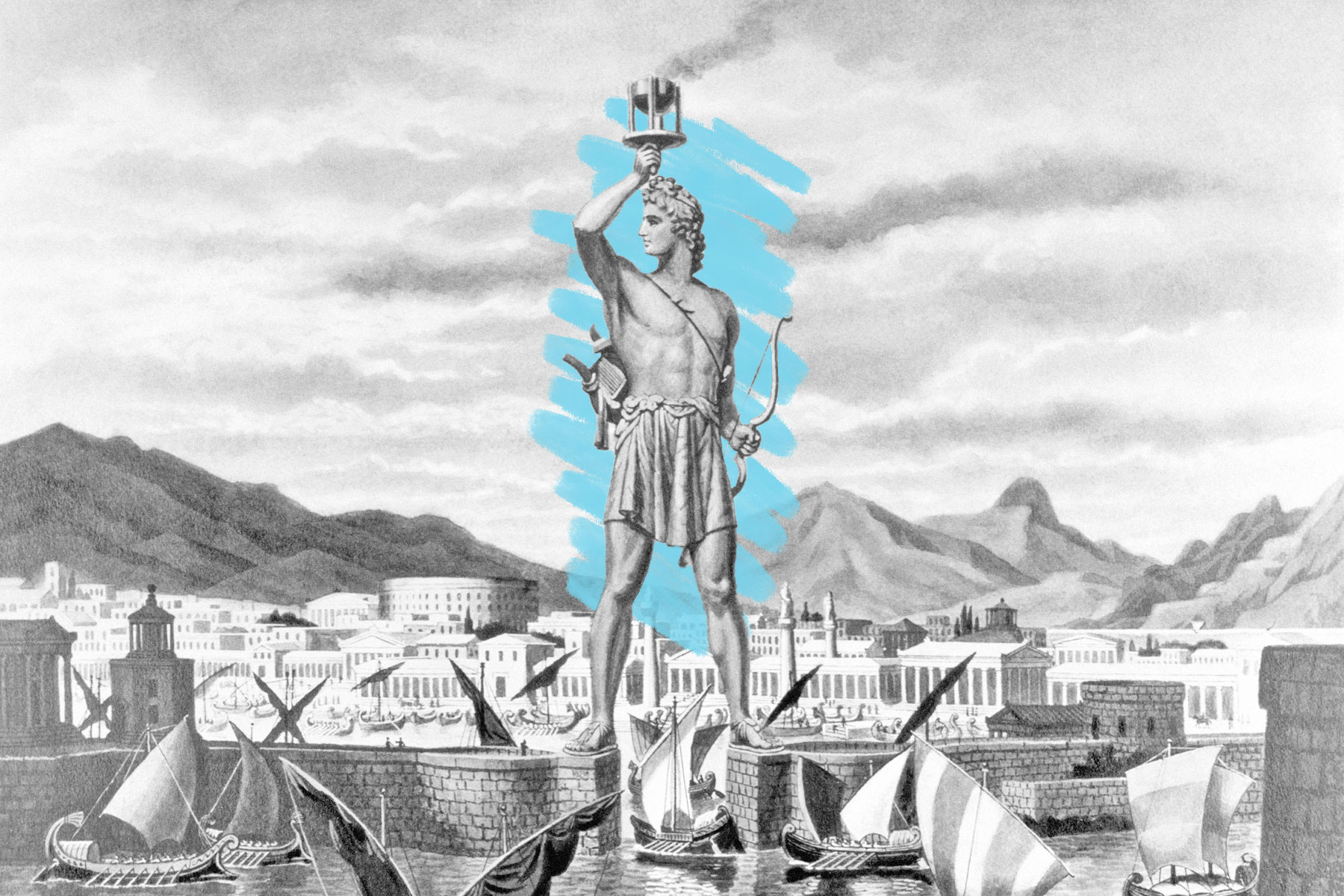 |
The Colossus of Rhodes only stood for about 55 years. |
World History |
 |
| |
| Greek sculptor Chares of Lindos was tasked with building the colossal 108-foot-tall statue; he began around 292 BCE, and the work lasted for 12 years. Though the sculpture's exact location is unknown, it's believed to have stood on the harbor's eastern side, and was likely made of iron and stone coated with bronze. The Colossus stood triumphantly for five decades, but it fell around 226 BCE when an earthquake struck the region and toppled the great wonder. Its remnants were scattered around until 654 CE, when invading Arabian forces gathered and sold what remained of the statue. There was so much debris that it's said to have taken more than 900 camel loads to transport. | |
 | |
 | |||||||||
By the Numbers | |||||||||
| |||||||||
| |||||||||
 | |||||||||
| |||||||||
The marathon was inspired by an ancient Greek battle. | |||||||||
| The origin of the marathon race dates back to the Greco-Persian Wars of the fifth century BCE and the ancient Battle of Marathon, though the commonly told origin story is likely a myth. According to the legend, a messenger named Pheidippides ran 25 miles between Athens and the city of Marathon to spread the news of a Greek victory in the battle. That myth is likely a combination of two events that actually occurred. In 490 BCE, over the course of several days, Pheidippides ran nearly 300 miles from Athens to Sparta and back to gather additional forces to defend against a Persian attack. The Athenians won the Battle of Marathon days later, and marched 25 miles back home from Marathon to defend against a potential second attack. That march was conflated with Pheidippides' initial run in retellings of the battle that were written centuries later, including Robert Browning's 1879 poem "Pheidippides." The myth inspired French archaeologist Michel Bréal to propose a similar event for the 1896 Athens Olympics. The first Olympic marathon featured 17 runners traversing a 24.8-mile course between the Marathon battlefield and the city of Athens. | |||||||||
 | |||
Recommended Reading | |||
 | |||
| | |||
 | |||
| | |||
| + Load more | |||
| |||||||||
| 700 N Colorado Blvd, #513, Denver, CO 80206 | |||||||||
|





ConversionConversion EmoticonEmoticon